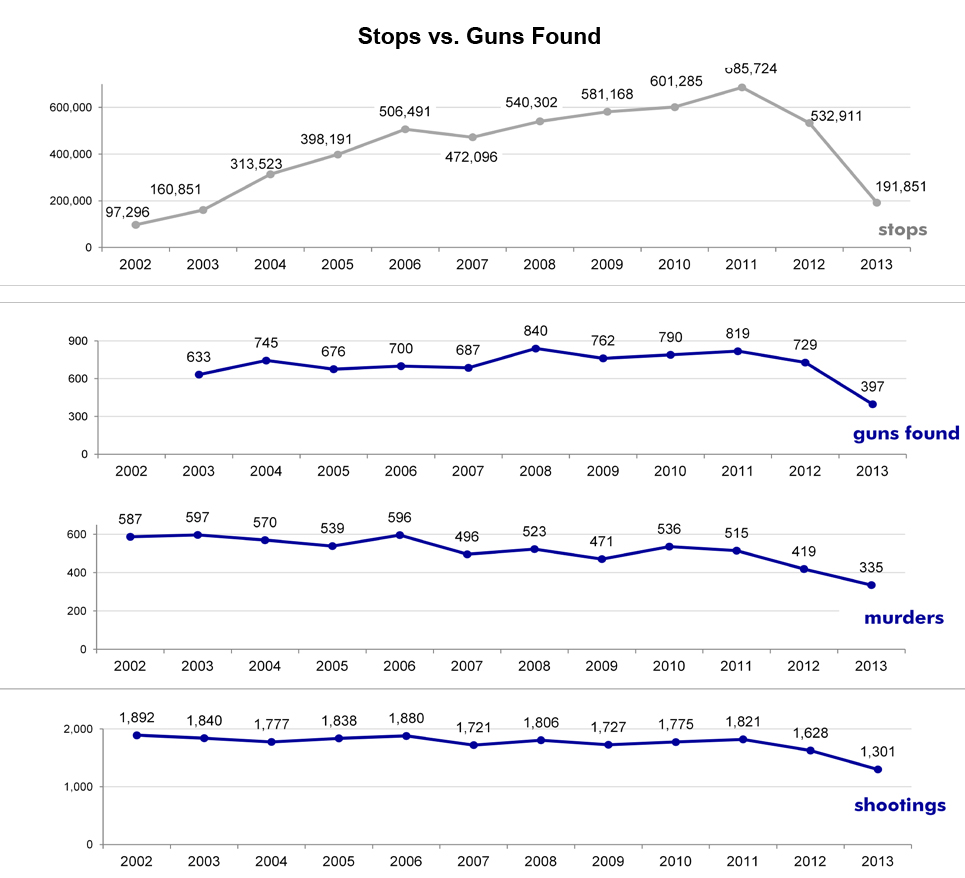NYCLU on Arrests of Pro-Palestine Protestors at NYU
Civil Liberties Union
The New York Civil Liberties Union today released an analysis of new NYPD data that provides the first detailed picture of the Police Department’s stop-and-frisk program throughout the totality of the Bloomberg administration, including new insights on the program’s stark racial disparities and its ineffectiveness in recovering illegal firearms. The NYCLU also released an analysis of 2013 stop-and-frisk data which shows the program last year had a gun recovery rate of only .02 percent and still overwhelmingly targeted young black and Latino men.

“We must learn from the lessons of the stop-and-frisk era,” said NYCLU Executive Director Donna Lieberman. “We all want to feel safe in our communities, but we need community policing that protects and supports our communities – all of our communities. Not hyper-aggressive broken windows tactics, including abusive and excessive stop-and-frisk, that perpetuate the tale of two cities. The Police Department’s own stop-and-frisk data shows that the NYPD can both protect public safety and individual rights.”
The Bloomberg administration’s abuse of stop-and-frisk was a national scandal and the NYCLU in 2012 reported that use of the discriminatory policing tactic increased more than 600 percent since the mayor took office, reaching an all-time high of 685,724 stops in 2011 that mostly targeted black and Latino men. Public outrage over the abuse made stop-and-frisk a top issue for voters in the mayoral election, with Bill de Blasio campaigning heavily on police reform.
The NYCLU’s new reports debunk the Bloomberg administration’s claim that stop-and-frisk was effective in getting guns and criminals off the streets. Last year, stop-and-frisks plummeted 64 percent from 2012 and 72 percent from 2011, while shootings and homicides significantly dropped as well. The gun recovery rate was just 0.02 percent. Of the 191,558 recorded stops last year — the lowest since 2004 — almost 90 percent of those stopped were innocent, meaning they were neither arrested nor issued a summons.
As stops skyrocketed from 2002 until 2011, the number of guns recovered, shooting victims and murders changed modestly, moving up and down. When stops plummeted in 2012 and 2013, shootings and murders declined substantially, with murders falling in 2013 to the lowest level ever recorded.
“The clear lesson from 12 years of NYPD data is that increasing stop-and-frisk does not increase public safety,” said NYCLU Associate Legal Director Christopher Dunn. “Most notably, while stops have plummeted since 2011, murders, shootings, and other serious crime all have come down since then. These facts must guide future NYPD policies and practices.”
While stop-and-frisks have dropped, the tactic still overwhelmingly targets black and Latino New Yorkers. Blacks and Latinos accounted for more than 70 percent of stops across all precincts in 2013. Once stopped, they were more likely to be frisked than white New Yorkers – even though those frisked were less likely to be found with a weapon than white New Yorkers.
The NYCLU uses the NYPD’s computerized stop-and-frisk database to examine the multiple aspects of stop-and-frisk data, including stops, frisks, use of force, reasons for stop and recovery of weapons. The 2013 analysis provides detailed information at a precinct level and a close examination of race-related aspects of stop-and-frisk.
The NYCLU’s analysis reveals that: